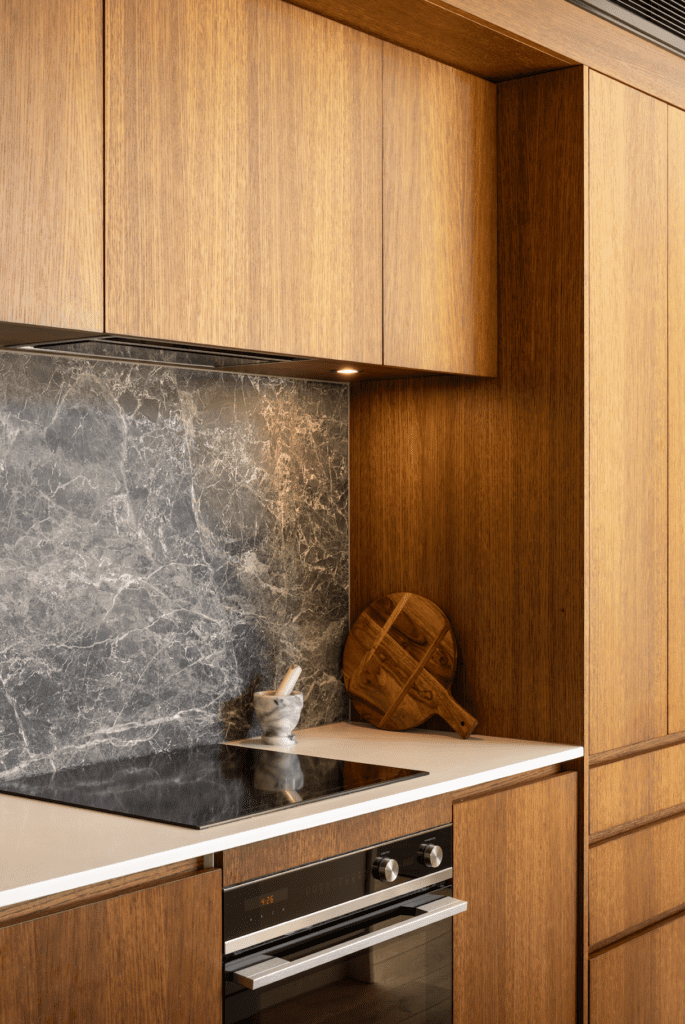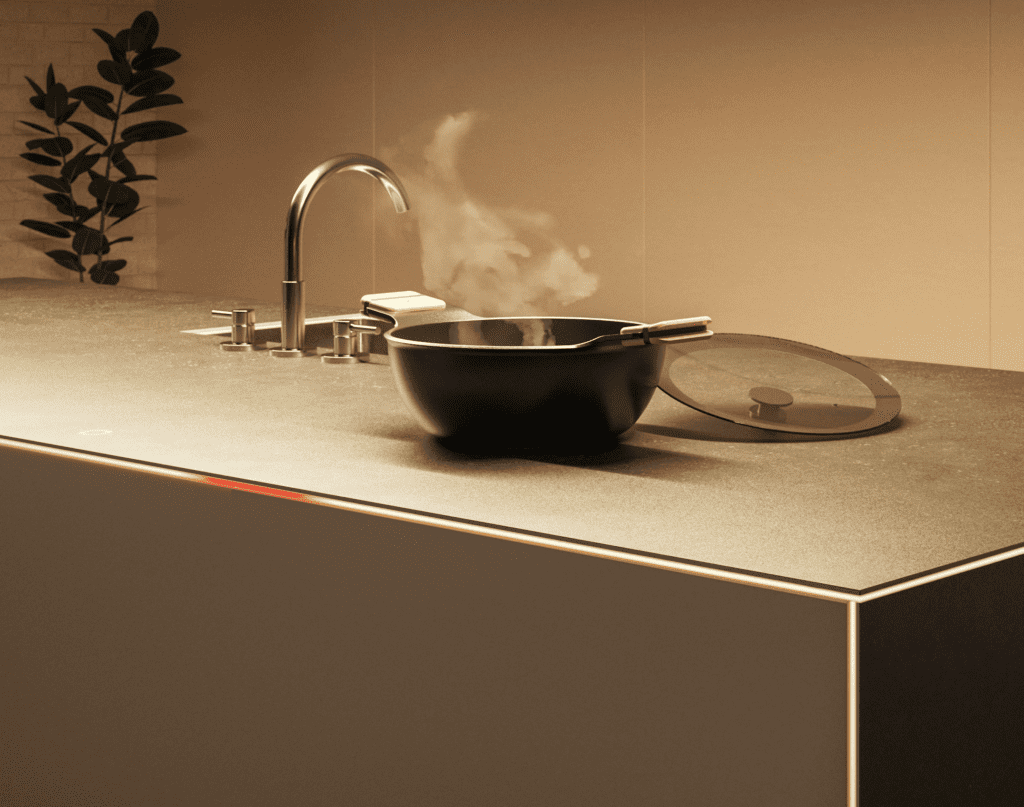The Home Electrification Series with Gen Less | Part One: Induction Cooking
At the heart of the home is an evolving technology. Although it may not be visible, it’s quietly working away, forming the basis for a new era of home cooking — and, in the process, putting the phrase ‘Now you’re cooking with gas’ firmly in the history books.
The future is, in fact, flameless, and is centred around induction technology, which is developing at such a pace that having a visible cooktop is no longer required. Invisible induction is the latest, and perhaps the most stunning, evolution of the residential kitchen. It means the same surface can be used to prepare, cook, and eat on, thanks to technological advances that allow a benchtop to become a ‘cooking surface’ rather than requiring the addition of a dedicated cooktop.
Although that’s the latest iteration of induction cooking, the more readily available ceramic induction cooktops provide a host of benefits, too, with induction cooking as a whole a key driver in home electrification.
The electrification of our homes is a hot topic. It’s become increasingly topical when it comes to considering our environmental impact — especially in the context of daily ritual and the way we prepare food.
The Energy Efficiency and Conservation Authority (EECA) recently set out to understand this more, aiming to delve into how we could reduce energy use, emissions, and costs in the home. The result is a report, delivered by Rewiring Aotearoa, that sets out just that, and the case for change is hard to ignore.

“A fully electrified home is best,” EECA lead advisor Dr Gareth Gretton tells us. “Cooktops are often the last gas element left in the home, and generally the easiest to replace. Induction cooktops are the most energy-efficient option on the market, as well as the safest, healthiest, and fastest technology available for cooking. An induction cooktop uses less electricity than a radiant ceramic cooktop, and less than half the energy of gas or LPG. [Induction cooktops] are powered by New Zealand’s highly renewable electricity grid, meaning very little carbon dioxide is emitted to power them. They can save around two tonnes of emissions over 15 years when compared to gas or LPG.”
This is a sentiment with which architect Rachael Piper agrees wholeheartedly. For Rachael, home electrification is an obvious answer to designing and building homes that will “give back rather than take away”. Her latest project, Meadowbank House (pictured above), was designed to show the possibilities for permanent, well-designed, infill housing, and what we can achieve in terms of efficiency and sustainability.

“In New Zealand our electricity comes from mostly renewable energy sources, and electrification is the way of the future,” Rachael tells us. “My husband and I both drive electric cars, and when we cook, it’s with induction. Induction is powered by electricity, and if the origin of that electricity is from a renewable source then it’s the most sustainable option. While I’m no chef, I believe it gives the best cooking results. Induction gives you instantaneous, even heat that is safer for families than the other options. You quickly learn what to use different settings for, and for me it simplifies cooking.”
As part of an intentional set of design moves to ensure Meadowbank House performed as efficiently as possible, Rachael optimised natural light and cross-ventilation, and integrated a high level of insulation. Combined with electric car charging, and induction cooking, this is a small but mighty example of how considered design decisions can have significant impact over time.
Find out more about home electrification and induction cooking at genless.govt.nz or read more about the latest invisible induction technology.




